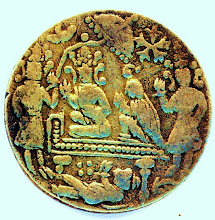Elizabeth II (Elizabeth Alexandra Mary; born 21 April 1926) is the queen regnant of sixteen independent states known informally as the Commonwealth realms: the United Kingdom, Canada, Australia, New Zealand, Jamaica, Barbados, the Bahamas, Grenada, Papua New Guinea, the Solomon, Tuvalu, Saint Lucia, Saint Vincent and the Grenadines, Belize, Antigua and Barbuda, and Saint Kitts and Nevis. She holds each crown separately and equally in a shared monarchy, and carries out duties for each state of which she is sovereign, as well as acting ahead, Supreme Governor of the Church of England, Duke of Normandy, Lord of Mann, and Paramount Chief of Fiji. In theory her powers are vast; however, in practice, and in accordance with convention, she rarely intervenes in political matters.
Early life
Elizabeth was the first child of Prince Albert 17 Bruton Street London , and on 29 May 1926, was baptised in the private chapel of Buckingham Palace Elizabeth Elizabeth Elizabeth Elizabeth
Marriage
The marriage was not without controversy: Philip was Greek Orthodox, had no financial standing, and had sisters who had married German noblemen with Nazi links. Elizabeth Kent Britain Elizabeth
Following their wedding, the couple leased their first home, Windlesham Moor, until 4 July 1949, when they took up residence at Clarence House. However, at various times between 1949 and 1951, the Duke of Edinburgh was stationed in Malta Burma Britain
Reign
Succession
George VI's health declined during 1951, and Elizabeth Canada , and visited the President of the United States , Harry S. Truman, in Washington , D.C. ; on that trip, the Princess carried with her a draft accession declaration for use if the King died while she was out of the United Kingdom Australia and New Zealand via Kenya Nairobi , word arrived of the death of Elizabeth Elizabeth was proclaimed queen in the various countries where she had acceded to the throne, and the royal party hastily returned to the United Kingdom Edinburgh moved into Buckingham Palace
In the midst of preparations for the coronation, Princess Margaret informed her sister that she wished to marry Peter Townsend, a divorced commoner sixteen years older than Margaret, with two sons from his previous marriage. The Queen asked them to wait for a year; in the words of Martin Charteris, "the Queen was naturally sympathetic towards the Princess, but I think she thought – she hoped – given time, the affair would peter out." After opposition from the Commonwealth prime ministers, and a British minister's threat of resignation should Margaret and Townsend marry, the Princess decided to abandon her plans.
Despite the death of the Queen's grandmother Queen Mary on 24 March 1953, the Queen's coronation went ahead in Westminster Abbey on 2 June 1953, in accordance with Mary's wishes. The entire ceremony was, save for the anointing and communion, televised throughout the Commonwealth, and watched by an estimated twenty million people in Britain
Silver Jubilee
In 1977, Elizabeth St. Paul United Kingdom Britain Jubilee Gardens in London Canada
According to Paul Martin, Sr., by the end of the 1970s the Queen was worried that the Crown "had little meaning for" Canadian Prime Minister Pierre Trudeau. Tony Benn said that the Queen found Trudeau to be "rather disappointing". Trudeau's supposed republicanism seemed to be confirmed by his antics, such as sliding down banisters at Buckingham Palace UK Canada
Golden Jubilee and beyond
In 2002, Elizabeth Jamaica UK Canada , the Golden Jubilee Journalism New Media Centre at Sheridan College , and the Queen Elizabeth II Wildlands Provincial Park
In 2005, she was the first Canadian monarch to address the Legislative Assembly of Alberta Elizabeth was rumoured to have shown concern that the British Armed Forces were overstretched in Iraq and Afghanistan Elizabeth did, however, apparently admire Blair's efforts to achieve peace in Northern Ireland Church of Ireland St England and Wales
The Queen and the Duke of Edinburgh celebrated their 60th wedding anniversary in 2007, with a special service at Westminster Abbey and private dinner hosted by Prince Charles at Clarence House on 19 November, and, the following day (their actual anniversary) a dinner party with other members of the Royal Family, former and present Prime Ministers, and the surviving bridesmaids and pages from the original wedding party. On 21 November, Elizabeth and Philip travelled to Malta
Finances
Sandringham House and Balmoral Castle
Religion
Aside from her official religious roles in the United Kingdom , Elizabeth Scotland

No comments:
Post a Comment